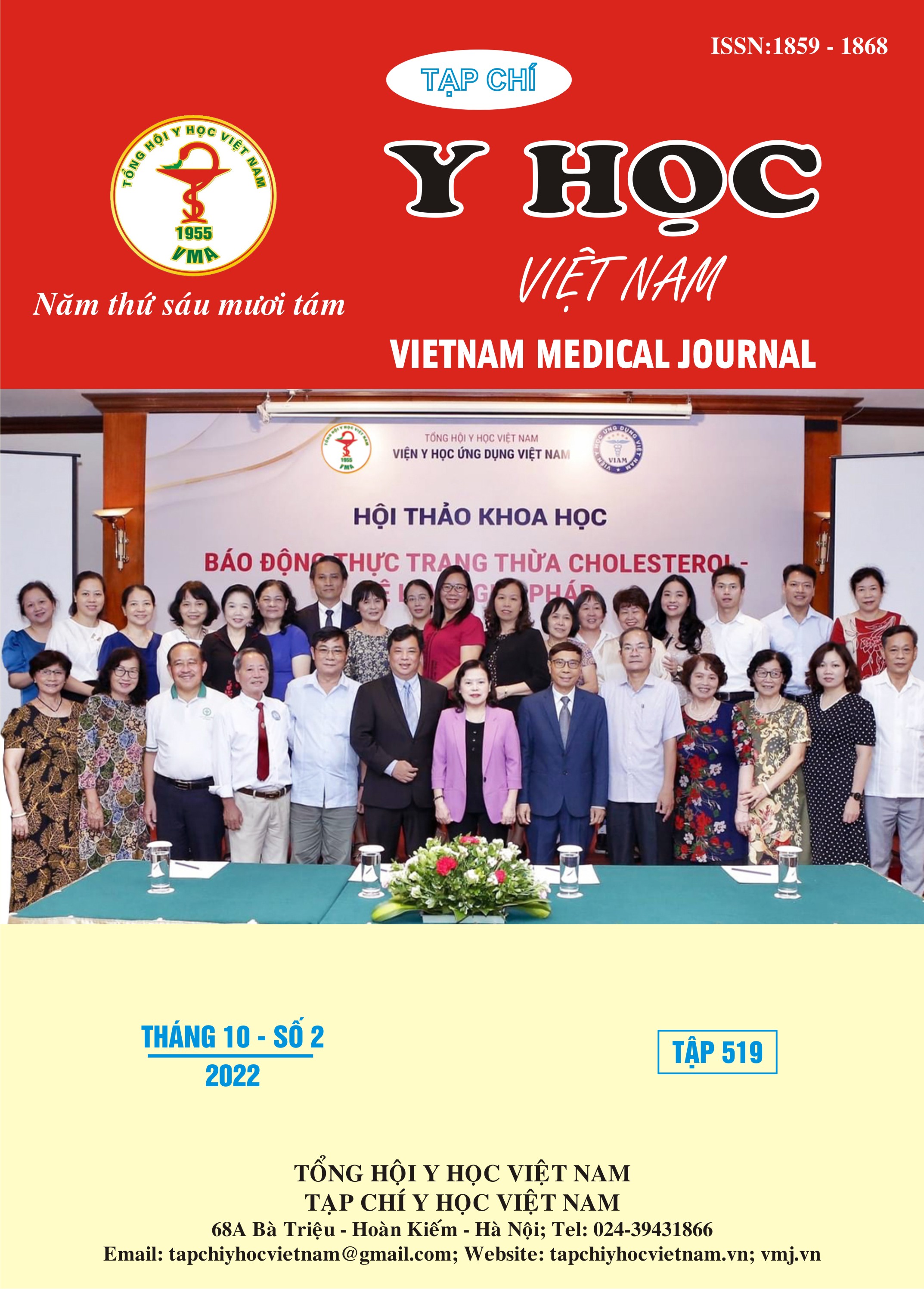CLINICAL AND RADIOGRAPHIC FEATURES IN CASES SERIES OF CHRONIC APICAL PERIODONTITIS
Main Article Content
Abstract
Background. Chronic apical periodontitis is the most frequent inflammatory lesion related to teeth in the jaws. Patients will develop apical periodontitis without having symptoms for a long period of time. Hence, it is essential that dental practitioners understand the clinical and radiographic features of chronic apical periodontitis, so they can be diagnosed and managed appropriately. Previous study attempted to review the clinical and radiographic features of chronic apical periodontitis. Objectives. To review the clinical and radiographic features of patients with chronic apical periodontitis who came for examination and treatment at the High Qualitive Medical Examination and Treatment Center, the Academy of Odonto-Stomatology and the Department of Odonto-Stomatology, Hanoi Medical University Hospital, Hanoi Medical University from May 2021 to July 2022. Methods. This descriptive cross-sectional study consisted of 73 teeth of patients who visited the High Qualitive Medical Examination and Treatment Center, the Academy of Odonto-Stomatology and the Department of Odonto-Stomatology, Hanoi Medical University Hospital, Hanoi Medical University from May 2021 to July 2022. All patients were asked about the disease, examined, X-rayed and made research records. Based on the size of the horizontal diameter of the apical lesion on the X-ray film, the patients were divided into 2 groups: group 1 with a diameter of ≤5mm; group 2 with diameters over 5 and ≤ 10mm to comment on clinical and radiographic characteristics. Results. Patients in the study group consists 53.4% male and 46.6% female. The reason for visiting to the doctor because of toothache and swelling accounted for the highest rate of 61.6%; followed by periodic dental check-ups accounting for 21.9%; dental fillings accounted for 9.6%; Purulent fistula accounted for 4.1%, the rest was for other reasons, accounted for 2.1%. The distribution of causes of the disease is: untreated caries 28.8%; trauma (occlusion, trauma) 26%; after root canal treatment failed 13.7%; central cusp 12.3%, teeth with restorations account for 11%, hard tissue damage not due to caries 5.5%, the rest is periodontitis 2.7%. The common clinical signs of both groups were 68.5% pain of longitudinal percussion, 61.6% tooth discoloration, 49.3% loose teeth, 28.8% fistula. The morphology of the apical lesion on X-ray is: Round 37%; oval 32.9%; crescent 16.4% and indeterminate 13.7%. The clear lesion boundary was found in 63%, which was much higher than the group with unclear boundary by 37%, the difference was statistically significant with p < 0.01. Conclusions. Patients coming to the clinic ranged in age from 9-72 years old. Group 1 met patients with a history of swelling and pain 64.9% higher than group 2 met 35.1%. At the same time, the main reason patients came to the clinic was pain, swelling, accounting for 61.6%. The most common cause of the disease is untreated tooth decay, accounting for 28.8%. The distribution of disease in the lower jaw is 68% higher than that in the upper jaw by 32%. The most common clinical sign was pain in 68.5%, then tooth discoloration 61.6%, loose teeth 49.3%, fistula 28.8%. The most common form of apical lesions on radiographs is round in 37%, and clearly demarcated in 63%.
Article Details
Keywords
Chronic Periapical Periodontitis
References
2. Nguyễn Mạnh Hà. Bước đầu tìm hiểu mối liên quan giữa các ổ nhiễm khuẩn mạn tính ở răng miệng và biểu hiện bệnh lý ở xa. Luận văn tốt nghiệp BS.CKII, Trường đại Y Hà Nội. Published online 1994.
3. Keiser K, Johnson CC, Tipton DA. Cytotoxicity of mineral trioxide aggregate using human periodontal ligament fibroblasts. J Endod. 2000; 26:288-291.
4. Trịnh Thị Thái Hà. Lê Thị Kim Oanh Bệnh chóp tủy. In: Chữa răng và nội nha. Vol 1 edition. Nhà xuất bản giáo dục Việt Nam; 2019:111-130.
5. TR Pitt Fort. JS Rhodes. HE Pitt Ford. Three dimensionnal root canal anatomy. In:Endodontics Problem Solving in Clinical Practice. Vol 1. first edition. Martin Dunitz; 2002:27-45.
6. Louis H.BerMan Kenneth M.Hargreaves. Diagnosis. In: Cohen’s Pathways of Pulp. Twelfth edition. Elsevier; 2021:1-32.
7. Nguyễn Mạnh Hà. Nghiên cứu đặc điểm lâm sàng và điều trị viêm quanh cuống mạn tính bằng nội nha. Luận án Tiến sỹ Y học, Trường Đại học Y Hà Nội. Published online 2005.
8. Nguyễn Hữu Long. Nhận xét kết quả điều trị nội nha của bệnh nhân bị viêm quanh chóp mạn tính với vật liệu hàn là AH26 và costisomol. Luận van thạc sỹ y học, Trường Đại Học Y Hà Nội, 2008


